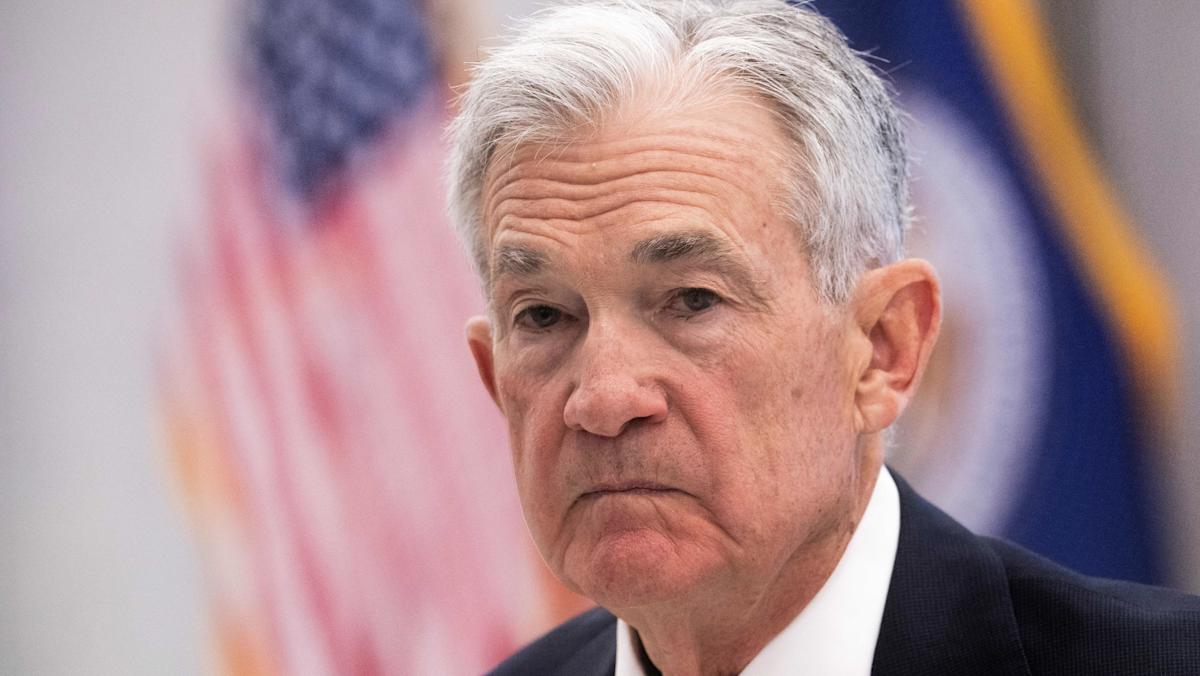In today’s dynamic economic landscape, the interplay between monetary policy, trade relations, and overall market behavior raises important questions about the future trajectory of the U.S. economy. Recently, trade tensions, particularly between the U.S. and China, have dominated headlines, leading many to wonder about the impact of tariffs on economic growth. However, some experts argue that the real issue might lie elsewhere – specifically, with the Federal Reserve’s monetary policies.
In a recent discussion, financial analyst Jay Hatfield, CEO of Infrastructure Capital Advisors, articulated a thought-provoking perspective on this matter. He indicated that while tariffs do have an impact, their effect on the U.S. economy has been overstated. According to Hatfield, trade represents roughly 10% of the overall economy, and the effective tariff rates currently sit between 10% to 15%, translating to a minimal impact of less than half a percent on Gross Domestic Product (GDP). Instead, he emphasized that other factors, particularly energy prices, play a more critical role in driving inflation.
The Role of Monetary Policy
Hatfield raised an alarming point regarding the Federal Reserve’s current approach to monetary policy. He noted that the Fed is implementing an ultra-tight monetary policy by shrinking the money supply—a situation he finds reminiscent of pre-financial crisis conditions. Typically, the money supply should grow around 5%, but it is currently contracting by about 1%. This tightening can have negative repercussions on various sectors, especially housing, which has not yet crashed, primarily due to a shortage of available units.
For Hatfield, the Federal Reserve’s stance is the most significant risk facing the economy today. While many focus on tariffs and their potential to hamper growth, he asserts that the Fed’s inability to accurately forecast inflation and its overemphasis on labor market indicators could lead to further economic inefficiencies. In his view, tariffs should be evaluated as one-time costs, akin to sales taxes, and thus not factored into long-term inflation expectations.
Earnings: The Future Driver
As we look to the future, Hatfield remains optimistic about earnings growth, positing that inflation is likely to decrease, an assertion backed by the prediction of low inflation figures coming soon. He believes that a “summer power rally” could be on the horizon, contingent on favorable conditions within the earnings landscape. However, he also acknowledged that the ongoing pressure from the Federal Reserve could derail this positive outlook if they maintain their current course.
Investors, therefore, need to be mindful of how to position themselves amidst these changes. Hatfield suggests a bullish outlook on both stocks and bonds, recommending a focus on companies that have higher risk profiles, such as financial institutions and industrials, rather than seeking safety in consumer staples like McDonald’s or Coca-Cola.
Strategizing for Stability and Growth
For investors looking to navigate this complex landscape, diversity in investment is crucial. Hatfield advises focusing on sectors that can capitalize on a potential market rally, particularly investment banks and private equity firms. In doing so, investors can not only target growth as market conditions improve but also cushion themselves against possible downturns fueled by unexpected Fed actions.
Staying diversified while being aggressive in risk selection is key. As the economic environment continues to evolve, those who are able to adapt their investment strategies may find opportunities for substantial gains, provided they remain cognizant of potential risks from the Fed’s monetary policy.
Conclusion: A Broader Perspective
In conclusion, while tariffs and trade tensions between nations like the U.S. and China certainly are significant aspects of today’s economic environment, they may not be the crux of the issue facing the economy. As articulated by Jay Hatfield, the real challenge could lie in the Federal Reserve’s approach to monetary policy and its possible implications for markets and economic growth.
Investors should heed these insights and carefully consider how to allocate their resources wisely in light of these overarching concerns. Keeping an eye on earnings reports and anticipating how monetary policy might shift in response to these economic indicators could provide a clearer picture of where to focus investment efforts in the coming months. Although uncertainty remains, understanding the fundamentals can empower investors and carry them through the ever-changing tides of the economy.










